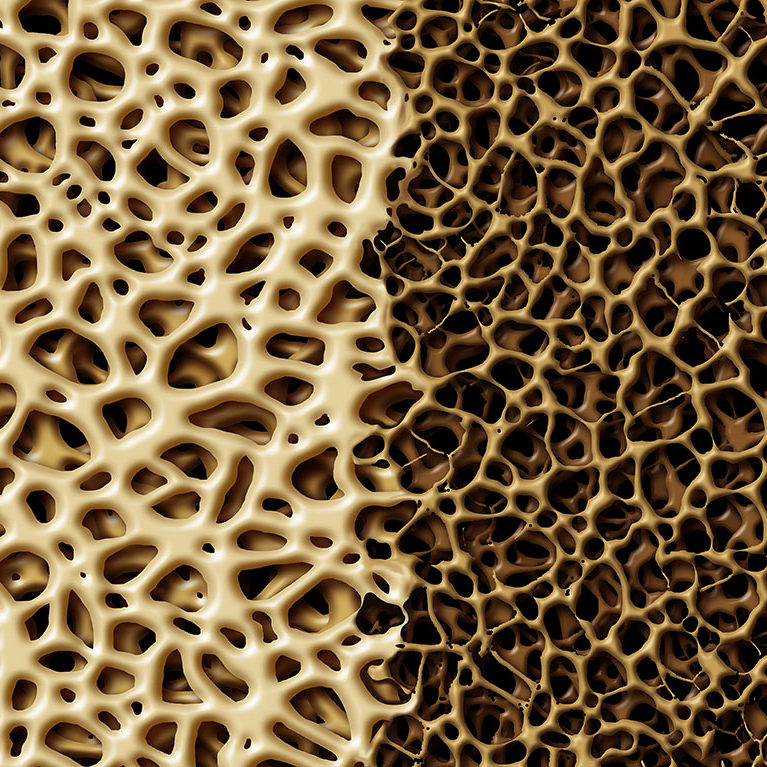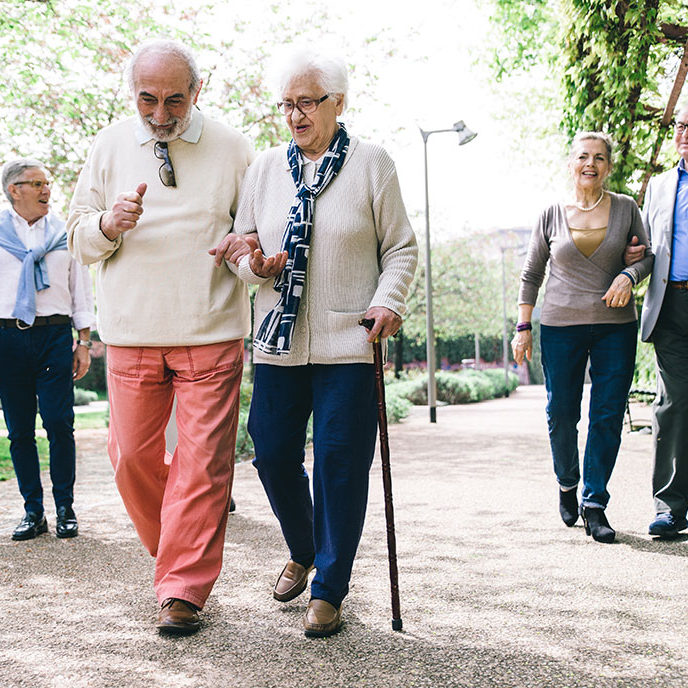Osteoporosis
Osteoporosis is the common weakening of bones, mainly as we grow older, that can lead to eventual fractures and disability. In addition to aging, risk factors include: non-Hispanic white or Asian ethnic background, small bone structure, family history of osteoporosis, prior fracture with little trauma, low levels of sex hormone, eating disorders, low calcium and vitamin D intake or absorption, lifestyle choices (such as sedentary or immobility, cigarette smoking, and alcohol abuse), diseases (such as hyperthyroidism, hyperparathyroidism, Cushings disease and inflammatory arthritis diseases such as rheumatoid arthritis), and medications (such as cortisone, excess thyroid replacement, breast and prostate cancer treatments, and heparin).
Osteoporosis is a silent condition and not associated with bone pain until there are fractures. For people over age 50, half of women and a sixth of men will have an osteoporotic fracture during their lifetime. Osteoporosis is diagnosed by measuring the concentration of calcium in the lumbar spine, hip and distal forearm bones with a DEXA scan and comparing that to a young healthy member of the same sex. Bone density better than 1 standard deviation less than the ideal is considered normal bone density. Bone density worse than 2.5 standard deviations less than ideal is considered osteoporosis. Between normal and osteoporosis is a mild form of bone weakening called osteopenia that is less severe than osteoporosis.
Treatment includes calcium supplementation (1,200 mg a day), vitamin D supplementation to obtain an adequate blood level, weight bearing physical activity to induce the bones to strengthen, and a medication if sex hormone is diminished. Medications that reduce bone loss include the bisphosphonates (Fosamax, Actonel, Boniva, and Reclast), as well as Miacalcin, Evista, Prolia www.prolia.com, or hormone replacement. All of these medications reduce the turn over and loss of bone, so they could possibly lead to complications with osteonecrosis of the jaw or atypical femoral fractures which are both very low to rare risk. Teriparatide stimulates bone formation instead, but requires a daily injection.
If osteoporosis is present, prevention of falls can be as important as treatment of the bone density. A cane or walker if the patient is unstable, removing hazards from the home and ensuring adequate lighting at night, help for lifting and carrying heavy things, and wearing sturdy shoes could prevent premature fractures. The National Osteoporosis Foundation https://www.nof.org/ is available for more information.


